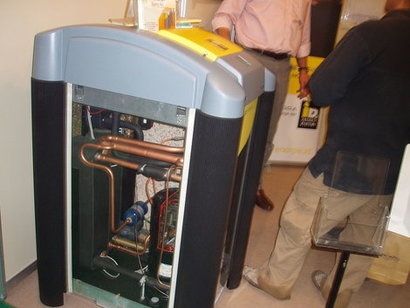
RMI’s The Economics of Electrifying Buildings report compares electric space and water heating to fossil-fuel-sourced heat for both new construction and home retrofits, under various electric rate structures in four locations: Oakland (California), Houston (Providence), Rhode Island and Chicago. The analysis focuses particularly on single-family homes, which make up the majority of carbon emissions from buildings fossil fuel use but notes that commercial building electrification must be achieved as well if deep decarbonisation goals established by US cities and states are to be met.
The analysis found that electrifying buildings with efficient heat pump devices already reduces carbon emissions today in all but the most heavily coal-intensive regions of the country. For new home construction, electrification delivers cost savings over the life of an appliance compared to fossil fuel use. The same is true for homes switching away from propane or heating oil, as well as for gas customers needing to replace a gas furnace and air conditioner at the same time, and for customers bundling rooftop solar with electrification. Retrofitting other existing homes heated by natural gas with electric space and water heating likely increases costs at today’s prices compared to replacing existing gas furnaces and water heaters with new gas devices, although other benefits and innovations may improve that cost differential.
While many regions of the country have made little progress toward electrification of residential buildings, widespread electrification will be a crucial lever to support decarbonisation goals. To accelerate this transition, the report recommends prioritising the electrification of US homes using propane and heating oil and ending the expansion of natural-gas distribution infrastructure, especially to new housing developments.
For new home construction, the report recommends bundling energy efficiency measures and so-called demand flexibility programs that use new utility rate designs with electrification initiatives; expanding demand flexibility options for existing electric space- and water-heating demand; and updating energy efficiency resource standards and related goals.
Converting the US electric grid to produce zero carbon is not enough to achieve policy goals. Such a transformation would cut total US emissions by only 30 percent. If, in addition to electricity decarbonisation, there were widespread electrification of buildings, ground transportation, and portions of US industry, more than 70 percent of total US emissions would be cut, according to the report. This transition would also support the long-term decarbonization of the buildings sector and accelerate the growth of net-zero carbon homes and communities, which provide a variety of other benefits for health, safety, and resilience.
Electrification in new construction has the added benefit of reducing the home energy burden felt by American homeowners and reducing their exposure to future fossil fuel price volatility. Furthermore, as home energy performance becomes more transparent, it can help improve home values.
“Effective emissions-reduction efforts in support of deep decarbonisation goals must include a robust - and rapid - expansion of electrification of homes and businesses” said RMI manager and co-author of the report Mike Henchen. “Emerging trends in the marketplace, from declining prices of electric heat pumps to the increasing grid value of demand flexibility programmes, should help speed this transition while delivering Americans both lower heating costs and a cleaner environment.”
Participants in the electrification-focused conversation at RMI’s Electricity Innovation Lab (e - Lab) Summit, held in October 2017, also contributed to the content of the report.
Image: A ground source heat pump (NREL)
For additional information:

